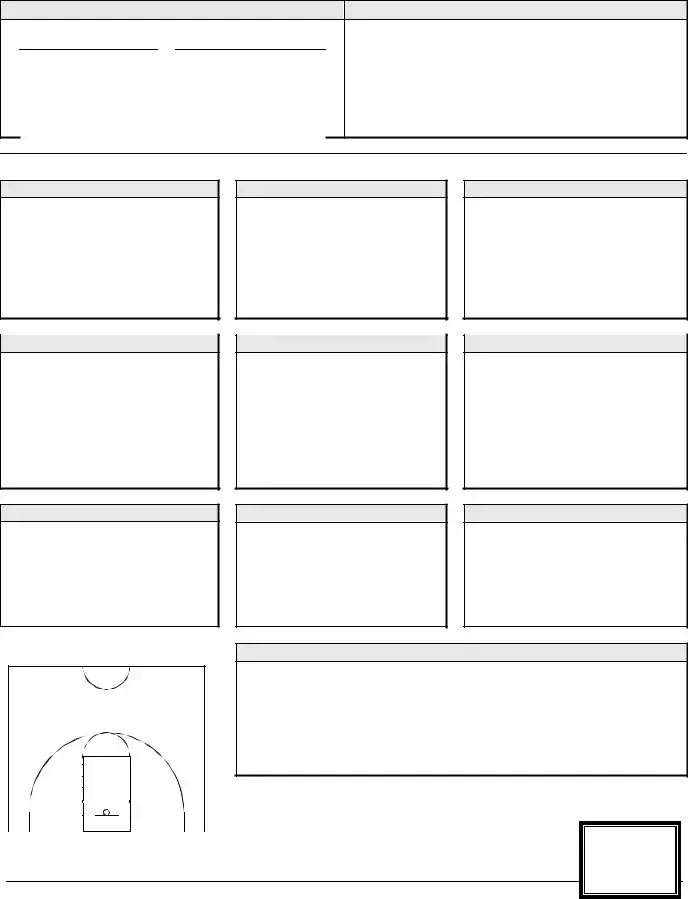An Employee Performance Review form bears resemblance to the Basketball Evaluation form in its purpose and structure. Both are designed to assess and document the performance of an individual within a specific context—athletic performance for the basketball player, and job performance for the employee. Like the basketball form, an Employee Performance Review typically includes various competencies and skills, rated on a scale, to objectively measure the individual's effectiveness, strengths, and areas needing improvement. Furthermore, these documents often provide space for comments or recommendations, offering a comprehensive view of the individual’s performance over a given period.
Similarly, a School Report Card shares a common goal with the Basketball Evaluation form: to evaluate and communicate the performance of an individual, in this case, a student, in various subjects or skills. Both documents employ a rating system to measure proficiency levels—ranging from needs improvement to outstanding in the Basketball Evaluation form, and usually letter grades or numerical values in a Report Card. They also include sections for general comments, allowing for personalized feedback beyond the quantitative assessments. These features make both documents critical tools for tracking progress and identifying areas for development.
The structure and intent of a Sports Tryout Evaluation form closely align with those of the Basketball Evaluation form. Each is used to assess the abilities of individuals in a competitive context, focusing on specific skill sets relevant to the sport or activity. For basketball, this includes shooting, defense, and dribbling, among others, while a tryout form for another sport would focus on different skills. Both forms use a rating scale to evaluate performance and often conclude with overall comments or recommendations, influencing decisions about player selection or team composition based on quantifiable metrics and qualitative observations.
A Skill Assessment form utilized in educational or professional development settings parallels the Basketball Evaluation form by aiming to gauge the capabilities of an individual in particular areas of expertise. Whether assessing technical skills, language proficiency, or another domain, these forms systematically measure proficiency levels through a predefined scale. This methodical approach allows educators or trainers to identify strengths and pinpoint areas needing improvement, guiding the development of tailored improvement plans, similar to how the basketball form's feedback can inform a player's training focus.
A Physical Fitness Assessment form is akin to the Basketball Evaluation form in its purpose to evaluate physical attributes and abilities, albeit in a broader health and fitness context. Both documents assess critical physical competencies—such as stamina, speed, and coordination in the case of basketball—that contribute to the individual's overall performance in their respective areas. By providing a structured means to rate physical capabilities, these forms play a crucial role in setting benchmarks, monitoring progress, and formulating strategies for physical development, thereby sharing a common goal of enhancing individual performance through systematic evaluation.

